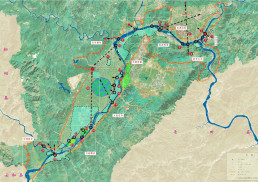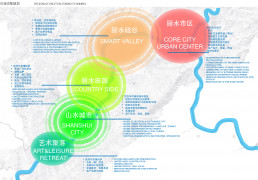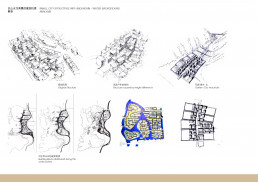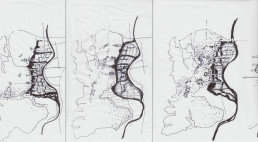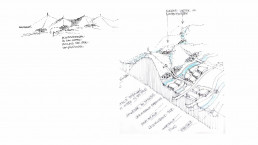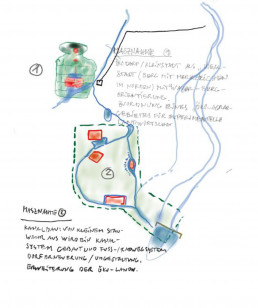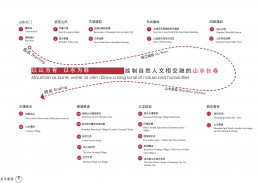Reflections on the basics of planning based on Shanshui art
Shanshui art depicts ideal landscapes in which nature is exaggerated. Human interventions remain minimal. Only lonely paths, sometimes pavilions, and only a very few people are visible, who are mostly contemplative and hardly active in nature.
(There were related currents in European culture: the dream of Arcadia, an original life in nature, free from social constraints, mostly associated with being a shepherd. This dream already existed in antiquity (Greece, Rome). He arose again in the early modern period in Europe and found expression in many poetry and paintings from the 17th century onwards, a culmination of daydreaming of the simple life in nature, of the backward-looking longing for the original unity of nature and culture, formed the Romantic period, especially in Germany.)
our thesis and rules for a sustainable development
1. Respect for nature:
Conservation of as many natural elements as possible in the landscape.
Renaturation of landscape elements, as far as possible (renaturation of rivers and streams, stopping further canalization of water bodies).
2. Land-saving settlement development:
Minimizing the constant spread of settlement areas and in particular surface sealing. The surface sealing (roads, parking lots, roofs, etc.) contributes to the formation of floods due to the rapid runoff of rainwater and disrupts the natural water cycle, especially the formation of new groundwater.
3. Re-enrichment with natural elements:
Both the intensively used agricultural areas as well as the urbanized areas of the city and the industrial areas should be enriched with natural elements such as tree groves, meadows, and ecologically (= intensively planted for self-cleaning) conceived waters and thus also make an important contribution to improving the microclimate.
4. New settlement plans:
Should be designed in consideration of and based on the landscape – natural conditions and the history of the landscape (paths, settlements, division of land, old irrigation systems). This means that the landscape conditions (morphology, vegetation, bodies of water, historical elements) are seen as potential for the design and not as an obstacle.
5. City and landscape create a tension
of today’s social conditions, in which the landscape has increasingly lost its economic importance in relation to the city. Technical and economic conditions have so far led to constantly progressing urbanization and urban concentration. However, information technology offers the possibility of decentralizing work and living.
At the same time, the stress in everyday urban life is increasing. Nature and landscape offer the chance, at least in phases, to immerse yourself in simpler, quieter, and more original forms of life and work for mental balance.
6. On the one hand, industrial agriculture has been successful in increasing yields.
On the other hand, the use of more and more chemical products leads to the contamination of both the food produced and the groundwater and soil.
PROJECT INFO
Experiences the different aspects of the valley by boat – a journey


